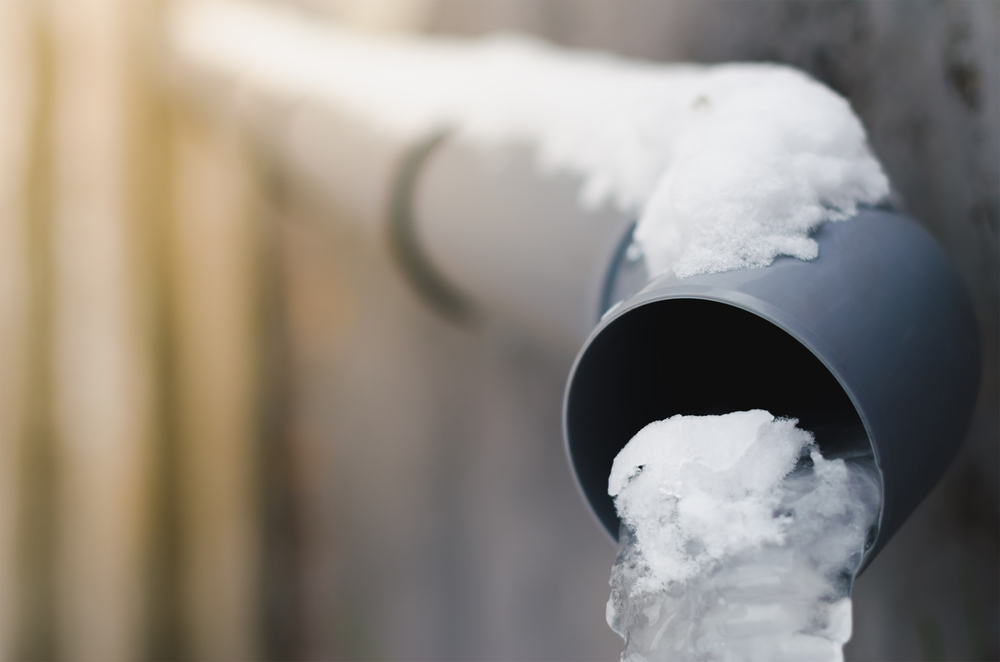They are making several good points regarding How To Avoid Freezing Pipes overall in the content on the next paragraphs.

Winter can wreak havoc on your plumbing, specifically by freezing pipes. Below's exactly how to prevent it from taking place and what to do if it does.
Intro
As temperature levels decline, the risk of icy pipelines increases, possibly bring about costly repair services and water damage. Recognizing exactly how to stop icy pipes is crucial for property owners in chilly climates.
Prevention Tips
Protecting vulnerable pipes
Cover pipes in insulation sleeves or utilize warm tape to safeguard them from freezing temperatures. Focus on pipes in unheated or external areas of the home.
Heating techniques
Keep indoor spaces properly warmed, especially areas with plumbing. Open closet doors to allow cozy air to flow around pipes under sinks.
Exactly how to identify icy pipelines
Search for decreased water circulation from taps, unusual odors or noises from pipes, and visible frost on exposed pipes.
Long-Term Solutions
Structural adjustments
Think about rerouting pipes far from exterior walls or unheated areas. Add added insulation to attics, cellars, and crawl spaces.
Upgrading insulation
Buy high-quality insulation for pipes, attic rooms, and wall surfaces. Appropriate insulation helps preserve consistent temperatures and lowers the threat of icy pipelines.
Safeguarding Outdoor Pipes
Yard hose pipes and outdoor taps
Disconnect and drain garden hose pipes before winter months. Install frost-proof spigots or cover exterior faucets with insulated caps.
Comprehending Icy Pipelines
What causes pipelines to ice up?
Pipes freeze when revealed to temperatures listed below 32 ° F (0 ° C) for extended periods. As water inside the pipelines freezes, it increases, putting pressure on the pipe wall surfaces and possibly triggering them to rupture.
Threats and problems
Frozen pipelines can lead to water system disruptions, building damage, and expensive fixings. Burst pipelines can flood homes and cause substantial structural damage.
Signs of Frozen Pipeline
Determining icy pipelines early can stop them from bursting.
What to Do If Your Pipes Freeze
Immediate activities to take
If you think icy pipelines, keep taps open to relieve pressure as the ice thaws. Make use of a hairdryer or towels soaked in warm water to thaw pipes slowly.
Conclusion
Avoiding frozen pipes requires proactive steps and quick reactions. By comprehending the reasons, indications, and safety nets, house owners can shield their plumbing during cold weather.
Helpful Tips to Prevent Frozen Pipes this Winter
UNDERSTANDING THE BASICS: WHY PIPES FREEZE AND WHY IT’S A PROBLEM
Water freezing inside pipes is common during the winter months, but understanding why pipes freeze, and the potential problems it can cause is crucial in preventing such incidents. This section will delve into the basics of why pipes freeze and the associated problems that may arise.
THE SCIENCE BEHIND FROZEN PIPES
When water reaches freezing temperatures, it undergoes a physical transformation and solidifies into ice. This expansion of water as it freezes is the primary reason pipes can burst. As the water inside the pipe freezes, it expands, creating immense pressure on the walls. If the pressure becomes too great, the pipe can crack or rupture, leading to leaks and water damage.
FACTORS THAT CONTRIBUTE TO PIPE FREEZING
- Low Temperatures: Extremely cold weather, especially below freezing, increases the risk of pipes freezing.
- Uninsulated or Poorly Insulated Pipes: Pipes located in unheated areas, such as basements, crawl spaces, or attics, are more prone to freezing. Insufficient insulation or lack of insulation altogether exacerbates the problem.
- Exterior Wall Exposure: Pipes running along exterior walls are susceptible to freezing as they encounter colder temperatures outside.
- Lack of Heating or Temperature Regulation: Inadequate heating or inconsistent temperature control in your home can contribute to frozen pipes.
PROBLEMS CAUSED BY FROZEN PIPES
WHY CERTAIN PIPES ARE MORE PRONE TO FREEZING
- Pipe Bursting: As mentioned earlier, the expansion of water as it freezes can cause pipes to burst, resulting in significant water damage.
- Water Damage: When pipes burst, it can lead to flooding and water damage to your property, including walls, ceilings, flooring, and personal belongings.
- Structural Damage: Prolonged exposure to water from burst pipes can compromise the structural integrity of your home, leading to costly repairs.
- Mold and Mildew Growth: Excess moisture from water damage can create a favorable environment for mold and mildew growth, posing health risks to occupants.
- Disrupted Water Supply: Frozen pipes can also result in a complete or partial loss of water supply until the issue is resolved.
https://busybusy.com/blog/helpful-tips-to-prevent-frozen-pipes-this-winter/
- Location: Pipes located in unheated or poorly insulated areas, such as basements, crawl spaces, attics, or exterior walls, are at higher risk of freezing.
- Exterior Pipes: Outdoor pipes, such as those used for irrigation or exposed plumbing, are particularly vulnerable to freezing as they are directly exposed to the elements.
- Supply Lines: Pipes that carry water from the main water supply into your home, including the main water line, are critical to protect as freezing in these lines can affect your entire plumbing system.
- Underground Pipes: Pipes buried underground, such as those connected to sprinkler systems or outdoor faucets, can be susceptible to freezing if not properly insulated.

We hope you liked our piece about 6 Ways to Prevent Frozen Pipes. Thanks a ton for taking the time to read our short article. For those who enjoyed reading our blog posting kindly make sure you remember to pass it around. Many thanks for your time. Come back soon.
Call Today
Comments on “Protecting Against Frozen Pipes in Winter: Expert Tips”